Watching one of the countless Italian events where people get dressed up in historical costume is great fun for tourists. But here’s the thing – most of the time they aren’t really doing it for you, they’re doing it for themselves.
Yes of course, events like the Palio in Siena are big tourist drawcards, but by all accounts the municipal rivalries on display are no less intense for that. And for every big event there are dozens if not scores of smaller local ones. Few are genuine survivals from antiquity, but many have been bolted on to things that are, such as the commemoration of a town’s patron saint, or a Good Friday recreation of the Passion.
Moreover, there seems to be a difference between the way these things are approached in Italy and in English-speaking countries. While living in England several years ago we saw an historical re-enactment which was clearly exemplary in its attention to historical detail – in costumes, weapons and military tactics. In Italy things can sometimes be a bit more approximate – the costumes worn by participants in a “medieval” festival might range from the 13th to the 17th Centuries.
But, with great respect to the English lot, they do seem to come from a more narrowly-defined (dare I say nerdy?) group than do their equivalents in Italy. In Italy you might find your neighbour – a carpenter during the week – walking solemnly along dressed in a monk’s cowl. Or the chap who wins the archery contest is the accountant who helps you work out your annual property tax. Or the gonfaloniere (banner carrier) in the parade is your plumber. Or the beautiful damsel in the flowing dress is the girl who serves your morning coffee at your favourite bar in the piazza. In other words, in Italy you get the sense that a broader section of the local community is involved. And thoroughly enjoying itself, to boot.
Here are four vignettes of this – one from Como in Lombardy, one from Rome, and two from Todi in Umbria.
Como, 2017
We had been staying in Cadenabbia, halfway up the lake, and had caught the hydrofoil down to Como for the day. The main object of the visit was the 11th-Century Lombard-Romanesque Basilica of Sant’ Abbondio, which involved a pleasant walk through the length of the historic centre of Como.
On the way back to the ferry terminal we heard the characteristic sound of a group of drummers some way off, and before long we came across a group of drummers and sbandieratori – those people who do the complicated displays with flags, including tossing them into the air and catching them.
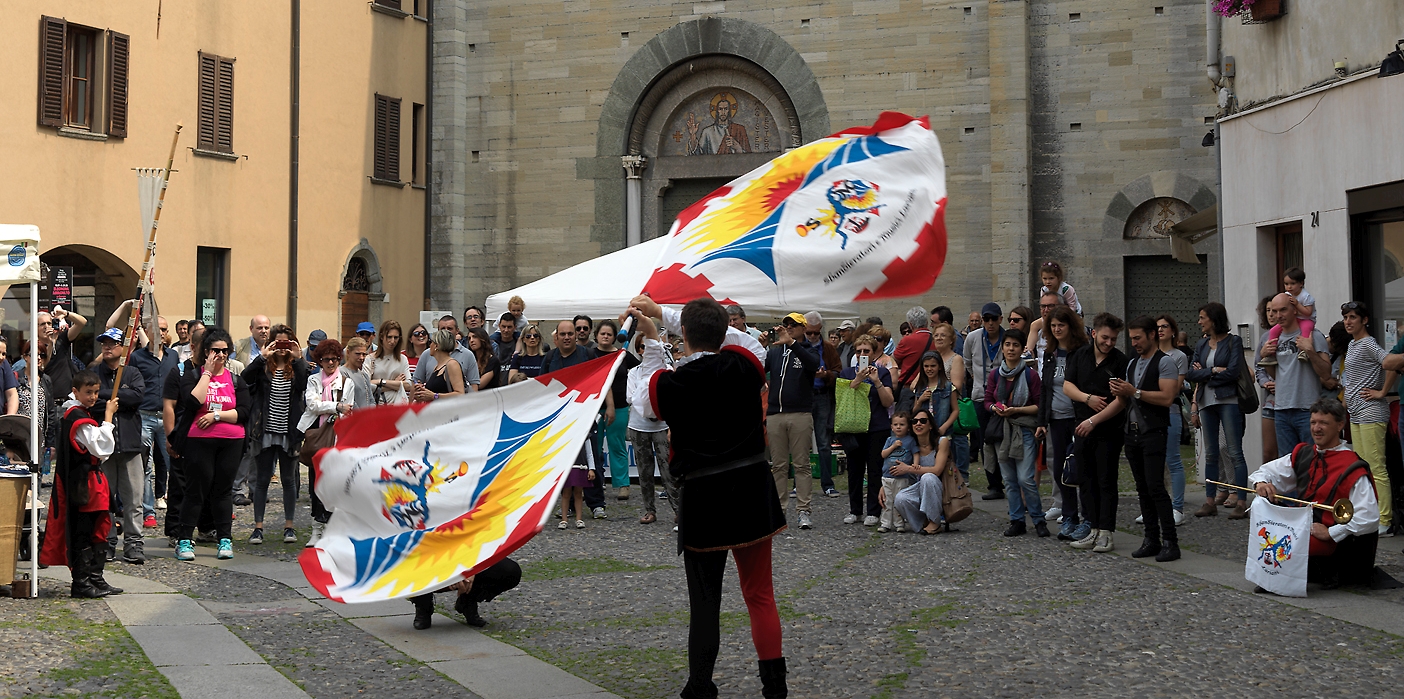
They were accompanied by a leather-lunged individual who, in breaks between drumming and flag-tossing, announced the forthcoming highlights of the medieval fair that was on that weekend. He in turn was accompanied by a small serious-looking child in a white smock and skullcap, and large spectacles. The effect (hopefully intended) was of some sort of miniature Doctor of Physick.
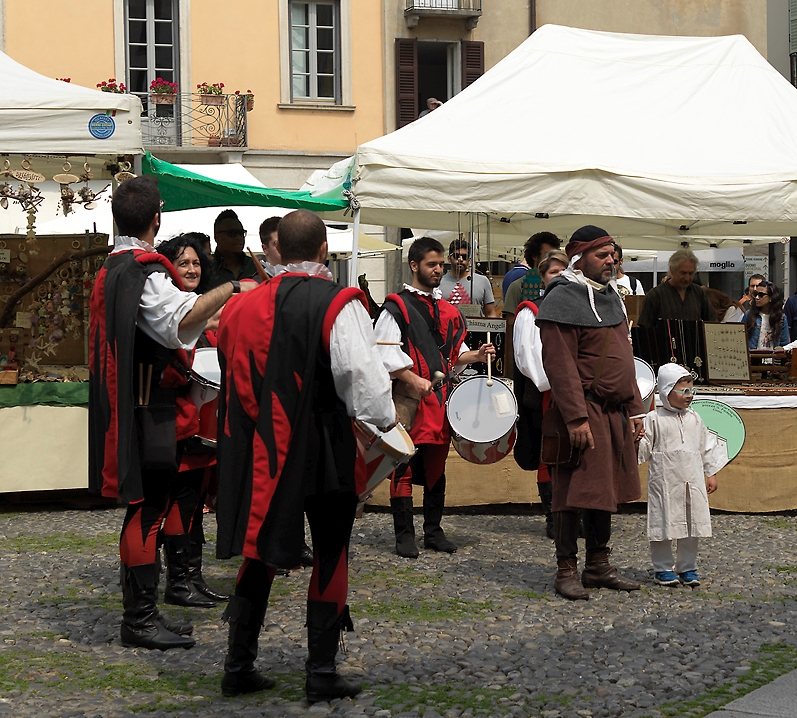
The flag-tossers were not the most expert, and a couple of times had to run into the crowd to catch the flags before they landed on spectators, but no-one seemed to mind very much.
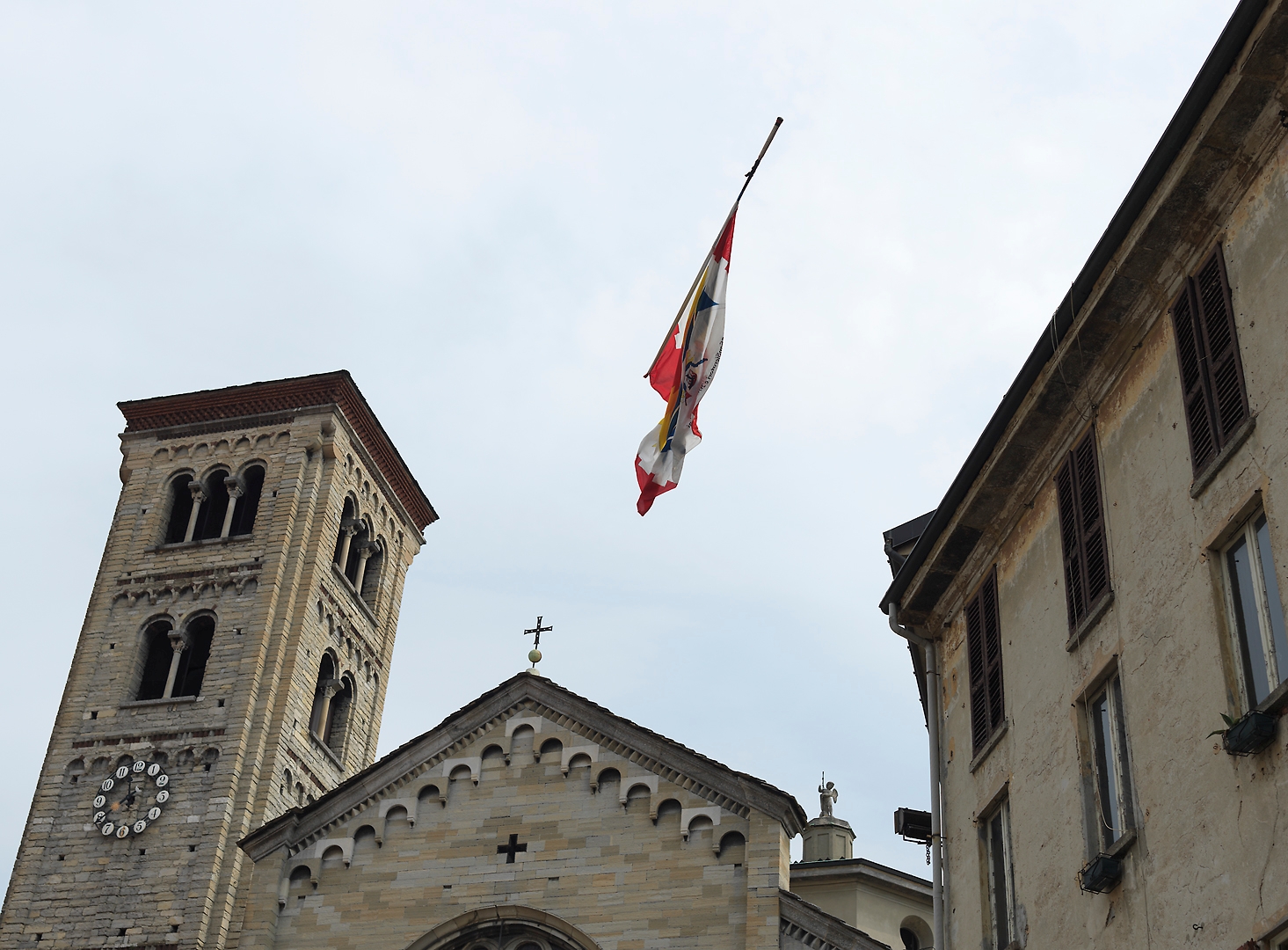
Buon Compleanno, Roma, 2015
We were making our way into the city from our digs in Trastevere, intending to visit the Aventine Hill (one of the Seven Hills of Rometm). On the way, near the church of Santa Maria in Cosmadin, I pointed to a crowd in the distance and observed that there seemed to be an awful lot of tourists down there. Lou’s eyesight was better than mine in those days and she thought that it looked more like some kind of political demonstration.
At that point we realised that it was at least seventy years since political demonstrations in Rome involved people marching in ranks wearing polished helmets, carrying weapons, and axe-heads in bundles of sticks. In fact, what we had stumbled on was the annual celebration of Rome’s traditional birthday. By tradition, Rome was founded on the 21st of April, 753 BC. That made the following Tuesday the 2768th birthday of the city. So instead of fascists (OK, some of them were being fascists but in the ancient sense) what we were seeing was a large number of historical re-enactment societies from all over Italy – and there are a LOT of them – descending on Rome to take part in a parade.
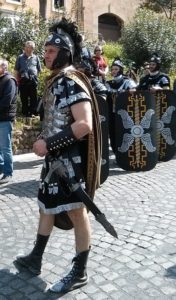
Several of the societies clearly took it very seriously indeed. They had adopted the legion that was raised in their own area and had put enormous effort into authentic recreation of the armour and weapons of the era. Others were a bit – well – cardboard, but everyone was having a jolly good time.
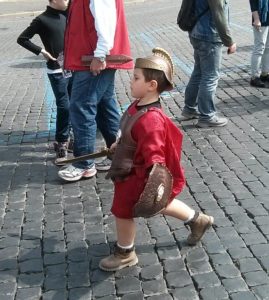
There were lots of legionaries, chanting the Latin version of the Romans, united, will never be defeated, a fair few gladiators, a handful of foederati (barbarian allies), and lots of vestal virgins.
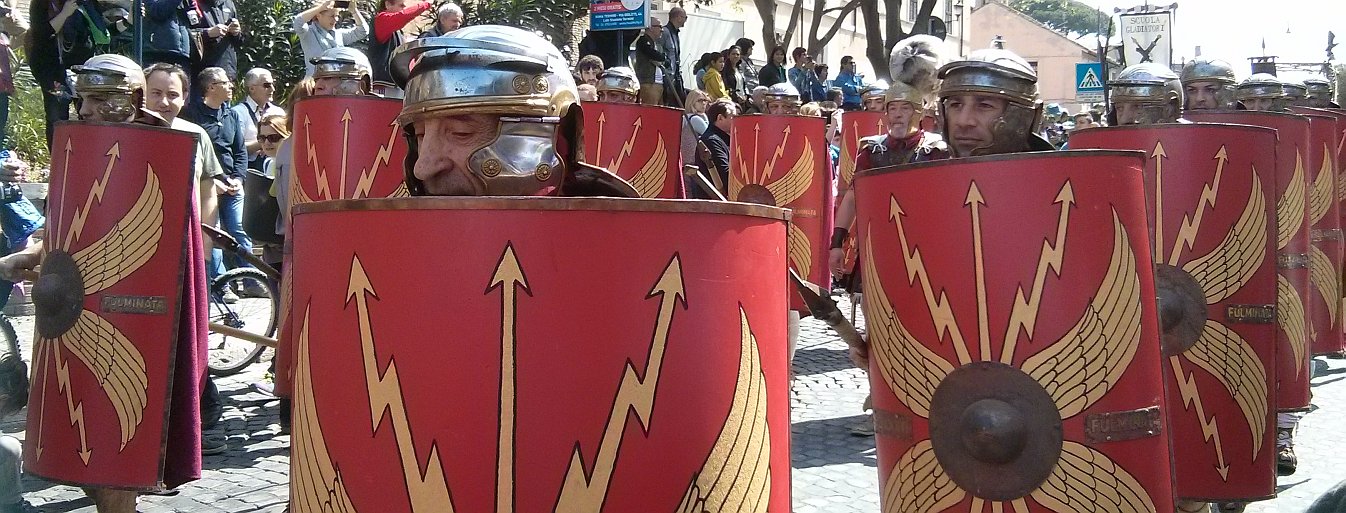
A group of senators dressed in their scarlet-trimmed white togas came past. I gave them an “ave” which they solemnly returned.

Festa di San Fortunato, Todi, Umbria, 2018
Saint Fortunatus is the patron saint of Todi. He seems to have been an historical figure, as he was a bishop of the town in the 6th Century who is said to have persuaded the invading Goths not to attack. On the other hand it is possible that they were just put off by the prospect of the long steep climb up from the Tiber Valley below, which is challenging enough for a Fiat Panda.
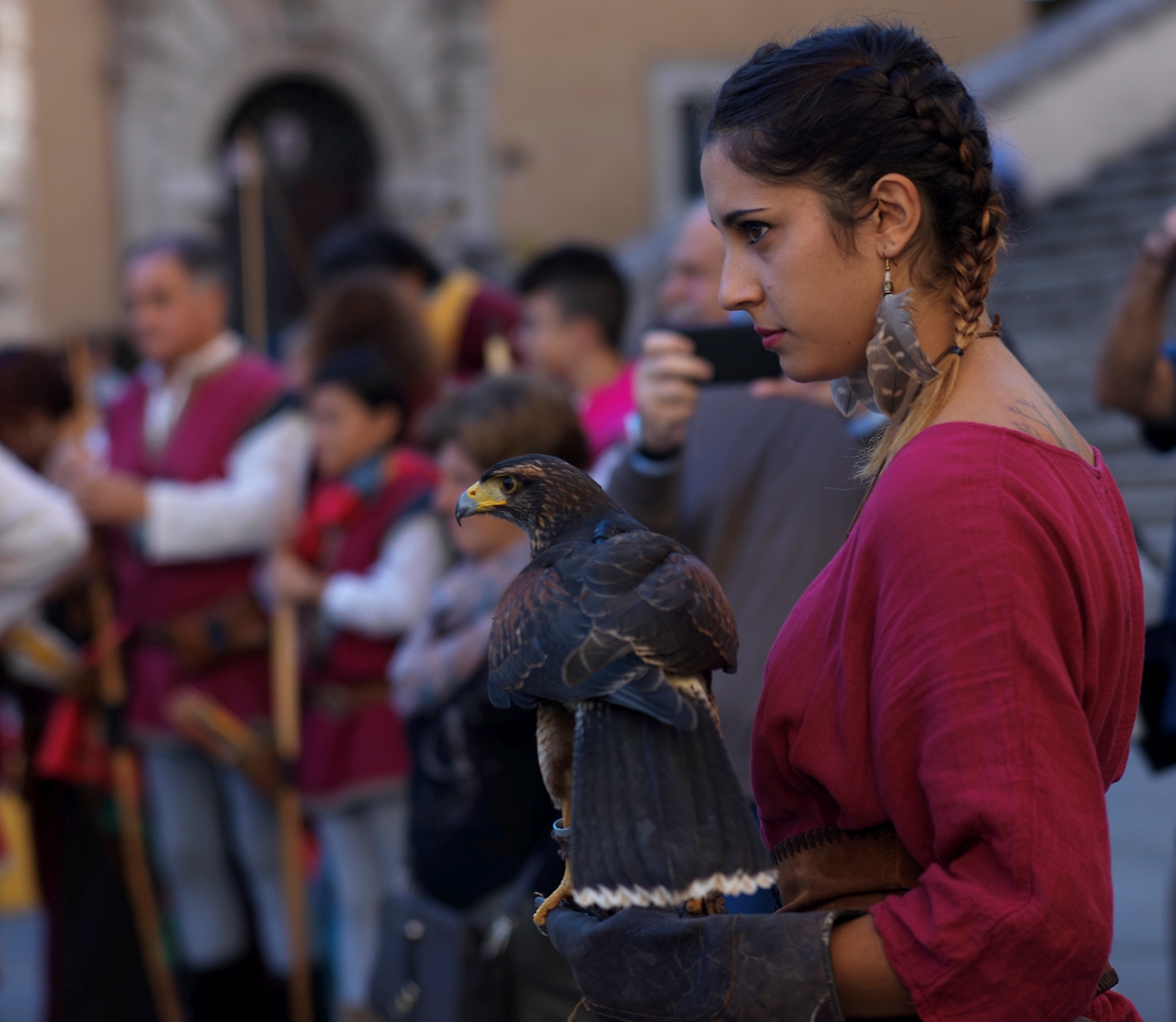
His saint’s day continues to be marked by religious observance in Todi, and there is no reason not to believe that the tradition has continued without interruption since antiquity. In recent times, the tradition has been augmented by a weekend of medieval high jinks including falconry demonstrations and an archery competition between the rioni or town districts, culminating in a grand parade.

Many of the groups in the parade were from other towns in the region, and as I said before, the definition of “medieval” was elastic enough to include costumes from eras up to the 17th Century.

Some groups, in costumes that could have been painted by Rembrandt, looked so fine that I was prepared to forgive them the anachronism.

Several of the young women of Todi had obviously decided to go with a general medieval vibe over strict authenticity and rather than wearing long dresses, had opted for long tights and short tunics. After careful consideration, I was prepared to forgive them that as well.
Archery Competition and Sbandieratori, Todi, Umbria, 2019
Medieval archery has become quite a thing in Todi and in April there is a competition which attracts teams from all over Italy. Contestants move between various locations in the town, where they take part in different events – shooting at conventional targets, shooting at targets that move, shooting from moving saddles that mimic the movement of horses, and so on. You can see a video of the 2018 tournament here.

There is a medieval-themed market, some of which is just stalls selling the usual local produce with the stallholders in period dress, but some of which are selling “medieval” wares of varying degrees of authenticity.

A group of drummers and sbandieratori is associated with the Todi archery group and they are very good.

The crowd favourites were three small girls who took part with special lightweight flags, and who took it all very seriously indeed. Each did a session with an adult (maybe her dad) in which they followed his movements with great concentration.



4 Replies to “The Serious Business of Dressing Up”